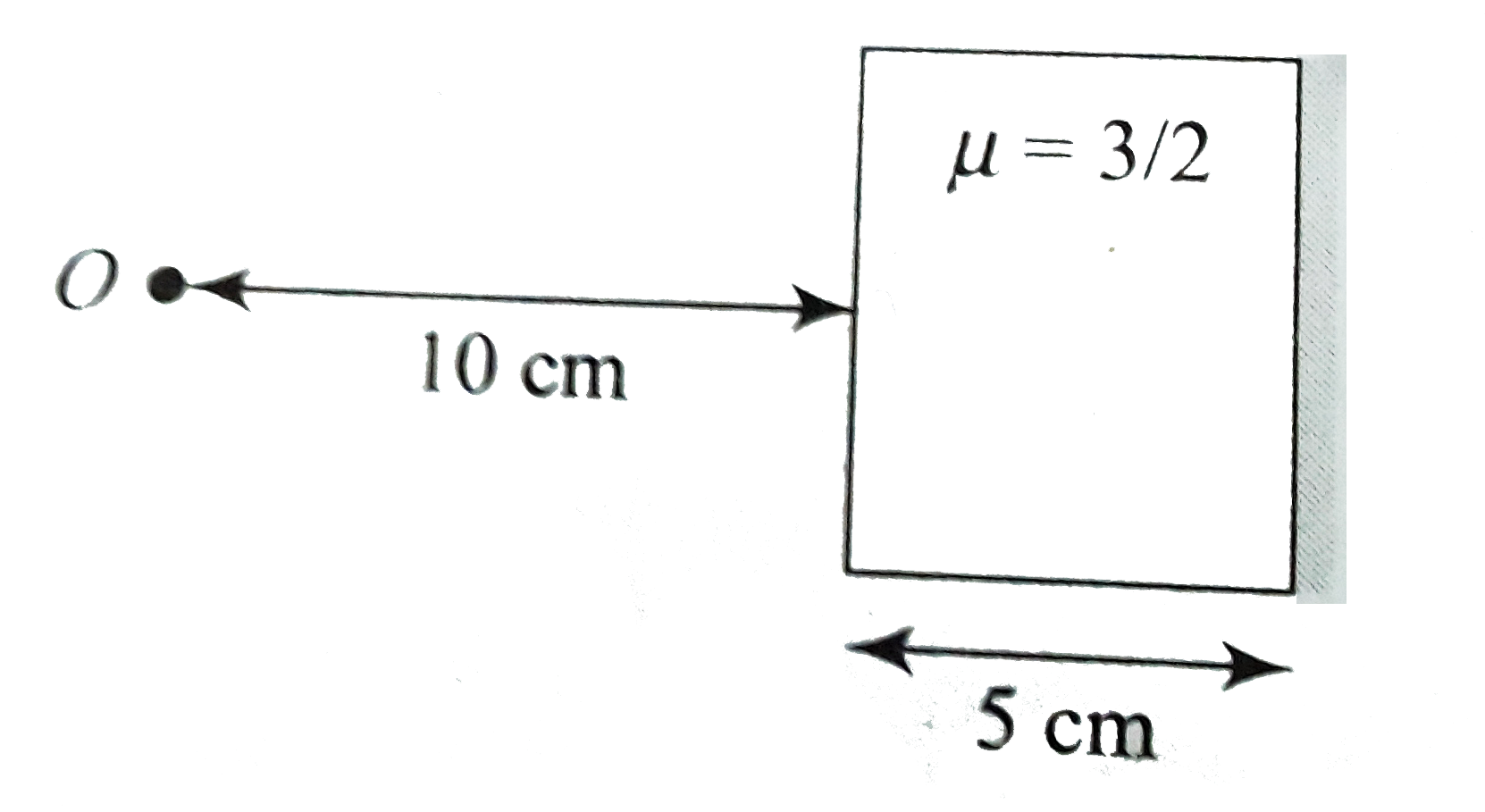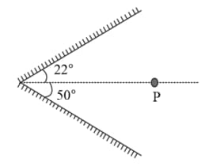When an illuminated object is held in front of a thick plane glass mirror, several images are seen, out of which the second image is brightest. Give reason.
To understand why the second image seen in front of a thick plane glass mirror is the brightest, we can break down the explanation into a series of steps:
1. Understanding the Setup:
- We have an illuminated object (like a candle) placed in front of a thick plane glass mirror. The mirror has one side polished and the other side is the glass.
2. Light Reflection:
- When light from the candle hits the mirror, a small percentage (about 4%) of this light is reflected off the polished surface of the mirror. This reflection creates the first virtual image of the candle, but this image is faint due to the low percentage of light being reflected.
3. Internal Reflection:
- The remaining 96% of the light does not escape the mirror. Instead, it travels through the glass and reaches the back side of the mirror, which is also polished. Here, this light is strongly reflected back towards the front.
4. Formation of the Second Image:
- The light that is reflected from the polished back surface of the mirror is then partially reflected back into the air. This creates a second virtual image of the candle.
5. Brightness of the Second Image:
- The second image is significantly brighter than the first image because it is formed from the 96% of light that was reflected from the polished back surface of the mirror. This strong reflection results in a higher intensity of light, making the second image the brightest.
6. Comparison with Further Images:
- Any subsequent images formed will have even less intensity because they will be formed from the remaining light that has already been reflected multiple times. Thus, they will be dimmer than the second image.
Conclusion:
The second image is the brightest because it is formed from the majority of the light (96%) that has been strongly reflected from the polished back surface of the mirror, while the first image is faint due to the minimal light (4%) reflected from the front surface.
- We have an illuminated object (like a candle) placed in front of a thick plane glass mirror. The mirror has one side polished and the other side is the glass.
- When light from the candle hits the mirror, a small percentage (about 4%) of this light is reflected off the polished surface of the mirror. This reflection creates the first virtual image of the candle, but this image is faint due to the low percentage of light being reflected.
- The remaining 96% of the light does not escape the mirror. Instead, it travels through the glass and reaches the back side of the mirror, which is also polished. Here, this light is strongly reflected back towards the front.
- The light that is reflected from the polished back surface of the mirror is then partially reflected back into the air. This creates a second virtual image of the candle.
- The second image is significantly brighter than the first image because it is formed from the 96% of light that was reflected from the polished back surface of the mirror. This strong reflection results in a higher intensity of light, making the second image the brightest.
- Any subsequent images formed will have even less intensity because they will be formed from the remaining light that has already been reflected multiple times. Thus, they will be dimmer than the second image.
The second image is the brightest because it is formed from the majority of the light (96%) that has been strongly reflected from the polished back surface of the mirror, while the first image is faint due to the minimal light (4%) reflected from the front surface.
Topper's Solved these Questions
- REFRACTION OF LIGHT AT PLANE SURFACESBOOK - ICSECHAPTER - REFRACTION OF LIGHT AT PLANE SURFACESEXERCISE - EXERCISE-4(A) MULTIPLE CHOICE TYPE
3 Videos
- REFRACTION OF LIGHT AT PLANE SURFACESBOOK - ICSECHAPTER - REFRACTION OF LIGHT AT PLANE SURFACESEXERCISE - EXERCISE-4(A) NUMERICALS
4 Videos
- REFRACTION OF LIGHT AT PLANE SURFACESBOOK - ICSECHAPTER - REFRACTION OF LIGHT AT PLANE SURFACESEXERCISE - EXERCISE-4(D) MULTIPLE CHOICE TYPE
3 Videos
- REFRACTION OF LIGHTBOOK - ICSECHAPTER - REFRACTION OF LIGHTEXERCISE - DIAGRAM BASED MCQ:
5 Videos
- REFRACTION THROUGH A LENS BOOK - ICSECHAPTER - REFRACTION THROUGH A LENS EXERCISE - EXERCISE-5(D) (MULTIPLE CHOICE TYPE)
2 Videos
Similar Questions
A point is placed in front of thick plane mirror as shown in figure. Find the location of final image w.r.t. object.

View SolutionWhen the object is at infinity in front of a convex mirror, it forms a real, erect and highly diminished image.
View SolutionAn object P is kept in front of two plane mirrors as shown in the figure. The number of image formed is k. Find out the value of k.

View SolutionAn object is at a distance of 1.2m in front of a plane mirrorr. Distance between the object and image is
View SolutionWhen an object is placed between two parallel mirrors, then number of images formed are
View SolutionWhere will you keep an object in front of a:
Concave mirror to get a real and diminished image ?
View SolutionA thick plane mirror shows a number of images of the filament of an electric bulb. Of these, the brightest image is the
View SolutionAn object is at a distance of 0.5m in front of a plane mirror. Distance between the object and image is
View SolutionThe diagram shows a point object P in front of a plane mirror MM1.
In the diagram, mark the position of eye to see the image.
View SolutionThe diagram shows a point object P in front of a plane mirror MM1.
Is the image formed real or virtual ? Explain why?
View Solution
